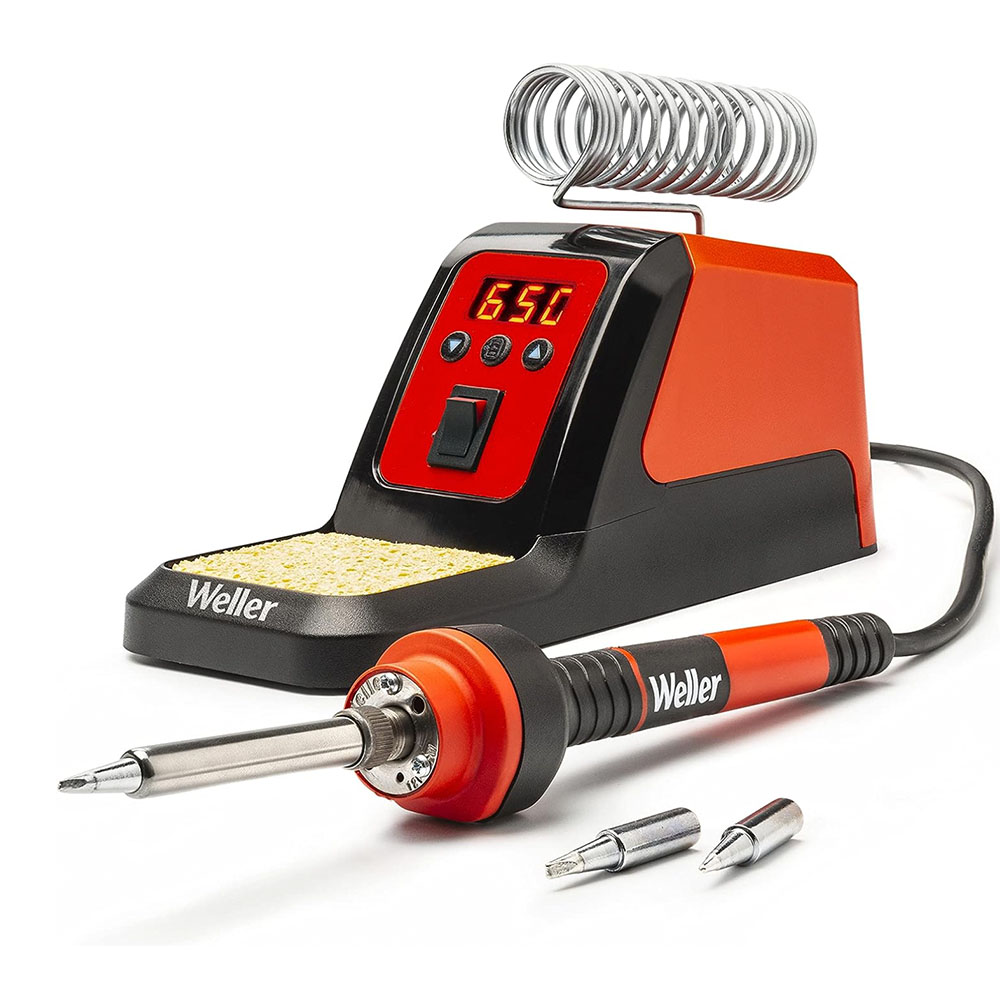Soldering Kit by Weller
Weller 70w Solder Kit

Weller Tools
Needs must be had, time for a new Weller Soldering iron… with that in mind, the Weller 70w Solder Kit did just the trick. The Weller 70w Solider Kit.
Weller 70 Kit

Weller 70

Ready To Solder

Unboxing

Weller Features
What’s in the kit? The kit includes the soldering iron, power unit, cord, tips, sponge and iron holder. It is a handy soldering kit to have in and around the office. Recently, there have been a need for more consistent power, temperatures, and overall better performance when comparing it to the original solidering iron/wood burning kit in the shop. Although the Weller 30w kit purchased many years ago has been helpful, its wood-burning capabilities have not been necessary.
For a hobby kit, that includes wood-burning and soldering tools, it is a useful tool to have around. Recently, there has been a need for ‘more power’ and ‘precise temperatures’ for a few items in the shop. For those following the 3D printer build, the Weller 70w was put to the test rewiring and replacing thermistor wires, fan wires and the hot end. I also tested the Weller 70w unit on an old hack, the 9V cell battery hack, and some car audio system wire for good measure. We will be soldering new wires into the guitar rebuild, including new wires, connectors, and more. Stay tuned for the guitar rebuild!
More On The Weller 70w
First impressions of the Weller 70W soldering iron are positive; it heats up quickly, is responsive, has a convenient housing, and comes with spare tips for small jobs. The responsiveness of the iron is impressive, and the tips are easy to clean. The digitized interface allows for precise soldering temps, and the housing coil protects the heating element. It is easy to use and gets the job done efficiently.
When comparing the soldering kits I have used, Weller has consistently been my brand of choice. While i don’t use a soldering iron frequently, when I do I trust Weller to deliver. The original Weller 30W Wood Burning or Hobby Soldering Kit has met all my needs. I have used it for vaious tasks such as repairing vintage train parts, fixing drone boards and fans, and working on home audio speakers, and soldering car audio wires like battery wires, guitar wires, head unit power wires, and remote wires. The Weller 30w hobby kit was great, not ideal, but got the job done.
